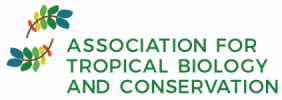Request for Proposals: Indicators for Aichi Biodiversity Targets 1, 13 and 15 Deadline: 17:00 GMT on 31st January 2017
Biodiversity indicators are essential communication tools, which allow evidence-based decision-making and policymaking. Indicators help to understand the status of and trends in biodiversity, key pressures driving these trends, the impacts of changes on human well-being and whether our interventions are working.
In 2010, Parties to the Convention on Biological Diversity (CBD) adopted the Strategic Plan for Biodiversity 2011-2020, intended as a framework not only for the biodiversity-related conventions, but for the UN system as a whole. The plan consists of 20 Aichi Biodiversity Targets* organised under five Strategic Goals. The Biodiversity Indicators Partnership (BIP) is the primary initiative coordinating the production and delivery of indicators, in order to assess progress towards achieving these global Targets. The BIP consists of over 50 Partners, including indicator providers, indicator users and indicator supporters.
At the 13th Meeting of the Conference of the Parties to the CBD, countries will endorse an updated list of indicators for the Strategic Plan for Biodiversity 2011-2020. This indicator framework breaks each Aichi Target into a number of ‘generic indicators’ (i.e. the ideal indicators for each element of the Target text). For the majority of these generic indicators at least one or more ‘specific indicators’ (i.e. existing and operational indicators) have been identified.
However, the indicator framework is still not fully comprehensive and a number of gaps remain. While the BIP has been endeavouring to find indicators to fill these gaps, for certain generic indicators it is proving particularly difficult to find operational specific indicators. As such, the BIP has selected three generic indicators to form the centre of an open call for proposals. The generic indicators are:
Trends in public engagement with biodiversity (Under Aichi Biodiversity Target 1)
Aichi Target 1 calls for raised awareness of biodiversity and its value. As a whole, Aichi Target 1 has proven a difficult subject for global indicators, due to the largely inherent reliance on primary (e.g. survey) data to develop trends on public awareness, and, specifically public engagement with biodiversity.
Trends in genetic diversity of socioeconomically as well as culturally valuable species (under Aichi Biodiversity Target 13)
Aichi Target 13 focuses on maintaining and safeguarding genetic diversity. While indicators exist or are under development relating to crop wild relatives and farmed, domesticated and cultivated species, there are no indicators relating to the genetic diversity of species with other (socioeconomic and cultural) values.
Trends in ecosystem resilience (Under Aichi Biodiversity Target 15)
Target 15 is a broad target, encompassing carbon stocks, restoration and resilience. Indicators are available for the former two elements, but not for the latter, potentially due to the different scales at which resilience can be conceptualised and assessed.
Request for Proposals
We are looking to select two proposals, each up to a maximum of GBP 75,000 for indicator development relating to one of the above three generic indicators. Ideally, the funds should be used to build on or further develop ongoing or existing work in order to develop and operationalise potential indicators. Funds will not be allocated purely for primary data collection, unless it is clear that future updates of the indicator will not require the same investment each time. Institutions will be expected to show a commitment to ensure regular updates of the indicator, including fundraising as necessary. As such, priority will be given to proposals for indicators that demonstrate potential for cost-effective updating.
It is anticipated that, by the end of the project, the contractor will submit the indicator for inclusion in the BIP suite, and will become an active Partner of the BIP. This may also involve preparing, updating and submitting the indicator (or disaggregations thereof) not just for the CBD but for other relevant MEAs and processes, and supporting national use of the indicator or its underlying data/methodology where appropriate.
Expected Outputs
- Fully developed and operational global indicator responding to one of the generic indicators above
- Indicator factsheet using template to be provided and including visuals (e.g. graph or map) showing trends over time for the global indicator, and global storyline
- Sustainability plan for continued production of the indicator
- Academic paper submitted for peer review by relevant journal
Proposal Guidelines:
Proposals should detail in no more than 6 pages:
- The ‘name’ of the proposed indicator
- How the indicator will be presented (graphically, spatially etc.) and interpreted
- A broad overview of the data (including data sources and accessibility) and methodology to be used, explored or developed
- An assessment of the feasibility of the indicator production (i.e. are there any factors, such as data availability, scientific consensus of methodology etc.) that might limit or prevent the indicator being fully developed and operationalised?)
- How the institution will establish systems for indicator sustainability (e.g. continued reporting of data from regional/national institutions)
- Full budget by activity, broken down for staff time and expenses
Evaluation Criteria:
- a. Relevance of proposal to indicator gap
- b. Feasibility of operationalisation of the indicator
- c. Spatial coverage of proposed indicator
- d. Plans for sustainability and continued production of the indicator (including resources that will be required for every update)
- e. Clear institutional commitment to ‘champion’ the indicator
- f. Proposed methodology and data – scientific robustness and cost-effectiveness
- g. Budget
- h. Availability of cofinancing
Approximate Timetable:
Open call: 5th December 2016 – 31st January 2017
Proposal shortlisting and selection: 31st January – 28th February
Project start date: March 2017
Project end date (including final indicator delivery): December 2017
Submission Process and Deadline:
Please submit your proposal as an MS Word Document no later than 17:00 GMT on 31st January 2017 to sarah.ivory@unep-wcmc.org. For any questions or clarifications, please email sarah.ivory@unep-wcmc.org prior to submission.
More info: bipindicators.net



